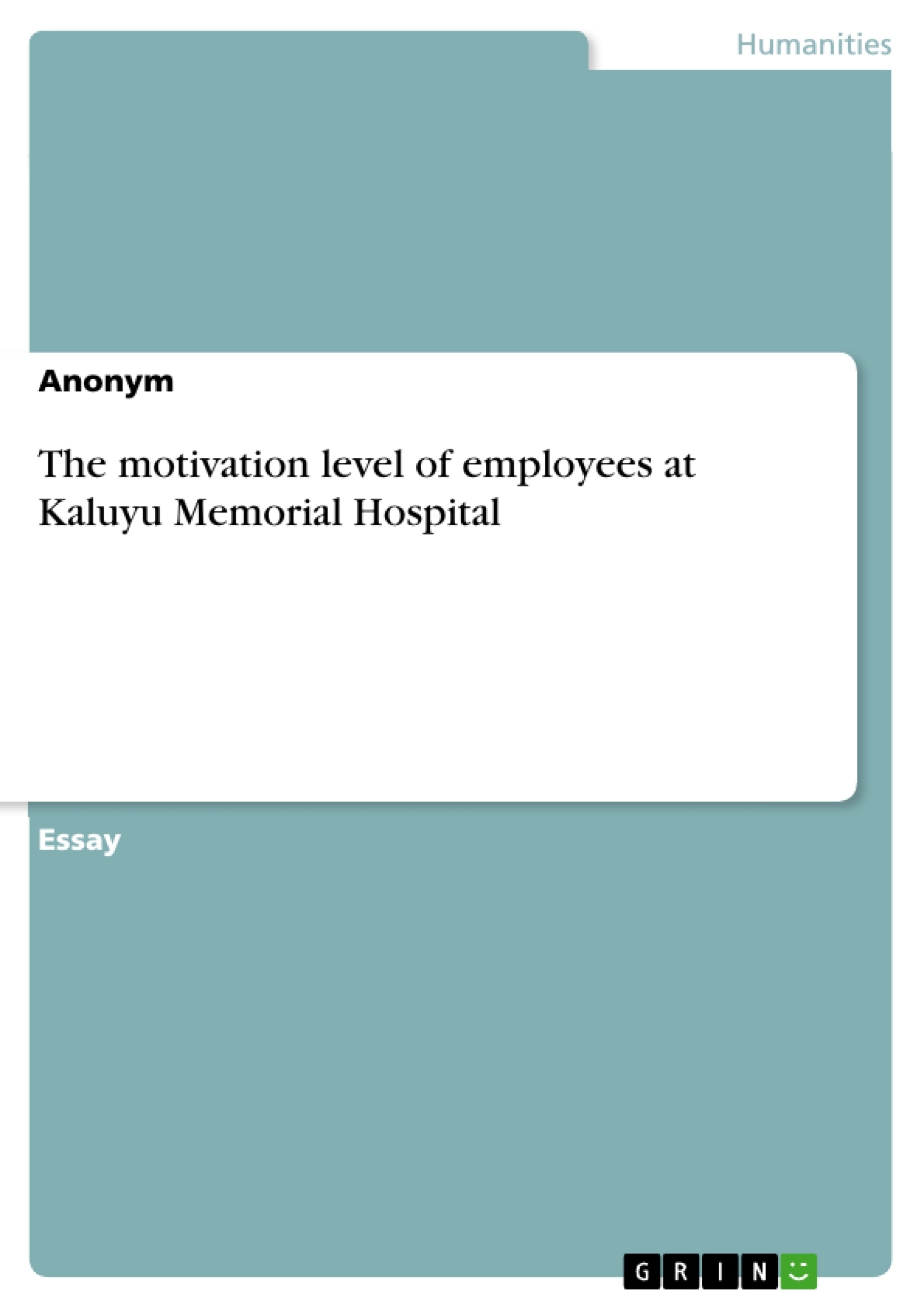Research indicates that 48 percent of employees in the world do not like their current jobs. The statistics is true in the case of the Kaluyu Memorial Hospital as the employees are uninspired, disengaged, and stressed out with their work. The case study shows that there are a number of demotivational factors at the hospital.
The micromanagement of the staff can lead to a lack of cooperation and teamwork, especially between the nurses and the doctors that can significantly impact the safety of the various procedures at the hospital. The impact can be severe, especially in the cases where the safety breach in the hospital leads to the death of a patient. Secondly, the job insecurity in the workplace can also have both service and business impacts. On the business, the job insecurity can lead to an increase in the costs of operating the hospital, especially if the organization has to hire new employees due to the exit of the old staff. Secondly, the exit of highly talented and skilled individuals will have a number of impacts on the services at the hospital may have staff shortages that significantly impact service delivery.
Inhaltsverzeichnis (Table of Contents)
- Major Demotivational Factors at the Kaluyu Memorial Hospital
- The Level of Impact of the Demotivational Factors on Service and Business
- Model of Motivation Applicable To the Kaluyu Memorial Hospital
- Communication System to Help Improve the Situation
Zielsetzung und Themenschwerpunkte (Objectives and Key Themes)
This case study aims to analyze the demotivating factors at the Kaluyu Memorial Hospital and explore how they impact service delivery and the overall business operations. The study focuses on identifying the root causes of employee dissatisfaction and proposes a communication-based solution to improve workplace motivation.
- Demotivating factors in the workplace
- The impact of demotivation on service and business
- The applicability of Herzberg's Two-Factor Theory
- Communication strategies to improve motivation
- Restoring trust between management and employees
Zusammenfassung der Kapitel (Chapter Summaries)
- The first chapter outlines the major demotivational factors at the Kaluyu Memorial Hospital. These include micromanagement, job insecurity, lack of recourse for performance, and lack of communication.
- The second chapter discusses the impact of these demotivational factors on both service delivery and business operations. The chapter highlights the potential consequences of low employee morale, such as safety breaches, increased operating costs, and staff shortages.
- The third chapter proposes the Herzberg's Two-Factor Theory as a suitable model for addressing employee demotivation at the hospital. The chapter explains how this model can identify and address both hygiene factors and motivating factors in the workplace.
Schlüsselwörter (Keywords)
The key concepts explored in this case study include employee demotivation, micromanagement, job insecurity, lack of recognition, lack of communication, Herzberg's Two-Factor Theory, and communication-based solutions for improving workplace motivation. The case study focuses on the Kaluyu Memorial Hospital as a case study of employee demotivation in the healthcare sector.
- Quote paper
- Anonym (Author), 2019, The motivation level of employees at Kaluyu Memorial Hospital, Munich, GRIN Verlag, https://www.hausarbeiten.de/document/498861


